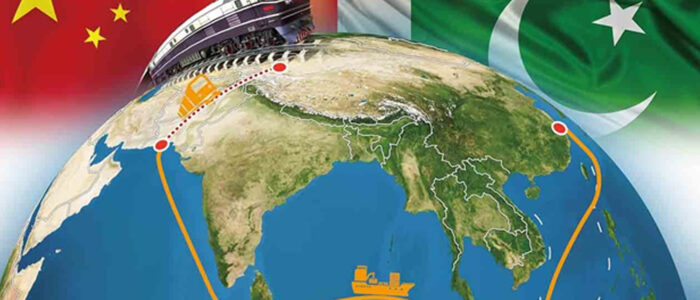The development of the China-Pakistan Economic Corridor (CPEC) is not only immensely important for the two immediate partners – Pakistan and China – but also for the larger Belt & Road Initiative (BRI). It offers the optimal route for regional connectivity through transportation and trade. The major goals of the BRI, including trade, people-to-people contacts, policy coordination, infrastructure, and financial integration, are all heavily dependent on regional connectivity. Under the BRI, CPEC is also crucial with regard to the extension and projection of China’s influence in the Persian Gulf and Indian Ocean. For Pakistan, it has the potential to launch the country into unprecedented economic prosperity. Despite the fact that progress has been slower than initially envisioned, several projects have materialised under the CPEC. Transport sector projects are the backbone of the scheme, and several transport and trade routes are becoming operational. Most of these routes will be optimised over the years to operationalise the sophisticated CPEC network. It is prudent to take into account the transportation and transit projects under the broader umbrella of CPEC following the completion of its “early harvest phase”. Important developments are related to both public transport infrastructure and the ventures specifically designated to facilitate the trade side of the project.
The current degree of engagement has already started manifesting gains and influencing the trade balance between Pakistan and China.
The transport network planned under the CPEC is based on land, sea, and air routes to allow the smooth flow of traffic between China and Pakistan and to eventually connect China to the rest of the world through the latter. Several projects have taken effect. Amongst the finalised projects, the major sites of KKH Phase II (Havelian – Thakot Section), spanning 120km, and the Karachi-Lahore Motorway (Sukkur –Multan Section) spanning 392km, have been successfully completed with the cooperation of the China Road and Bridge Corporation and the China State Construction Engineering Corporation Limited, respectively. A Joint Feasibility Study for the Upgradation of ML1 and Establishment of Havelian Dry port has been completed with the help of the China Railway; the Framework Agreement has also been signed. Other projects which have been successfully completed include the Orange Line Metro Train – Lahore, spanning over 27km, and Hakla – D.I Khan Motorway, spanning over 297km.
In addition to these completed projects, major projects under construction include the Zhob – Quetta (Kuchlak) (N-50) spanning over 305km, Khuzdar-Basima Road (N-30) spanning over106 km, the 146 km Hoshab – Awaran Road Section (M-8), the 153km KKH Alternate Route Shandur – Chitral Road and the Nokundi – Mashkhel Road stretching over 103km. Supplementary projects added to the CPEC portfolio include the Swat Motorway Phase-II and Dir Motorway.
Corresponding to such major road networks, the CPEC project has also yielded gains for Pakistan on the railways side of public transport. Out of the total contracted 230 railway coaches, 46 high-speed rail coaches arrived in Pakistan last November. The coaches have brought advanced technology to Pakistan railways. In addition to this advanced infrastructure, the country is also set to receive the transfer of railway technology in the form of personnel training. Overall this will be supplemented by transferring equipment, machinery and plant facilities. This will help boost Pakistan’s railway sector by providing long-term gains. This project stands out as a successful example of the overall railway sector cooperation planned under CPEC. The long-term plan includes the construction of a new line from Peshawar to Torkham, a 1600km long Peshawar-Karachi High-Speed Railway Line, and the reconstruction of the ML1 existing Railway between Karachi and Kotri. Both short-term and long-term plans will also address the reconstruction of the existing ML2 Line and the construction of the 1328km Besima New Railway line from Gwadar to Jacobabad and Quetta. Another one of the flagship projects of CPEC is the New Gwadar International Airport. Located 26km east of Gwadar City in Gurandani, Balochistan, this $230-million project was launched in 2019 and is fully funded by the Chinese government. Nearly 40% of the project has already been completed; it is expected to be ready and functional by September 2023.
Pakistan’s commitment to CPEC is also reflected in policy-side reforms. A National Transport Policy (2018) has been prepared to assist with the project’s development. This policy is based on the ambitious goals of expanding Pakistan’s existing transport infrastructure and streamlining it with the help of technology, including Big Data, drones, robotics, and artificial intelligence. Such a policy is especially relevant, keeping in view the staggering economy of the country. Pakistan’s strategic location offers it vast potential to develop as a transit economy, and the CPEC provides an unprecedented opportunity to realise this vision. A robust transport infrastructure which can support high-density transport is crucial to streamlining the kind of traffic flow expected and envisioned under the CPEC project. Such connectivity is required to improve employment, investment, and access to markets. The current degree of engagement has already started manifesting gains and influencing the trade balance between Pakistan and China. Predictably, China surpasses Pakistan’s previous export destinations in certain sectors as exports tilt in its favour. It is also claiming an increasing share in the imports and the finance and telecom sectors of Pakistan. With all due reservations, the degree of advantage that Pakistan can achieve from this cooperation will depend not only on the push from China’s side but also on pragmatic efforts by the country itself.
